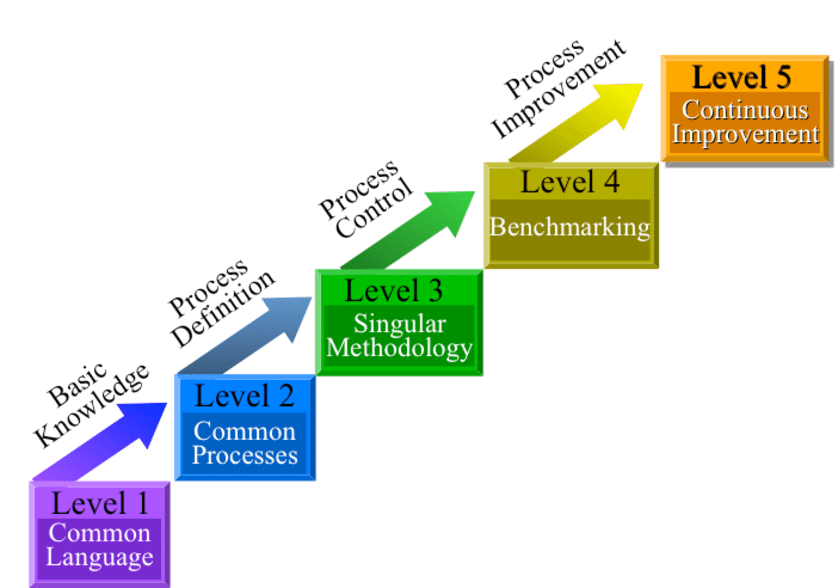Strategic project planning and other phenomenon for successful project has been recognized from several decades. Harold Kerzner has invented project management model innumerably knows as Kerzner Project Management Maturity Model (KPM3). This model is thoroughly possessed acquisition to best strategic management plans for any organization. Additionally this model is excellent medium to gain such excellency in project management system of any organization. Kerzner notifies that this model is considerably fruitful for strategic and multilevel planning for any organization.
Foundation of achieving superiority level in various strategic goals can be illustrated by Kerzner Project Management Maturity Model (KPM3). This model consist five basic levels to enable better understanding of its functionality and proficiency for project management. This levels are commonly known as level of common language, common process, singular methodology, benchmarking, and continuous improvement.
Level 1: Common Language
This phase of model consists various understandings of terminologies relating to project management strategies. This level of model complies various strategic considerations with prior information about further progresses.
Level 2: Common Processes
This level possess the adaption of various process prom previous successful project. This level define various methodologies and management principles for adaption in organizational planning. This common processes are basically based on application, planning and strategies of project to fulfill organization needs.
Level 3: Singular methodology
In this level organization combines all corporate methodologies with recognition of synergistic effects to convert into one singular methodology. This process gives certain methodology to organization to proceed in the project. Organization can achieve various benefits of synergistic effect from combining all methodologies from various corporate groups.
Level 4: Benchmarking
Benchmarking level is to provide competitive advantage environment for organization to improve continuously. This level define various benchmarks and reasons behind selecting certain benchmarks.
Level 5: Continuous Improvement
This level summarized the details from benchmarking level to enhance the further improvement in the project. This level also calibrate various methodology information for decision about further improvement in the project.
Kerzner Project Management Maturity Model (KPM3) can assign Risk factor to each levels. This risk factors are designated in three level as low, medium and high respectively. The level of risk is accompanying the influence (alteration) on the corporate culture. The risks can be termed as follows:
- Low risk: This level of risk does not impact on the corporate culture. Low level of risks are culturally acceptable as it is dynamically less affective.
- Medium risk: Various change factors and other considerations related to unfavorable yet decisive alteration in an organization can be termed as medium level risk.
- High risk: The type of risk which can be alter ultimate structure of corporate level then it can be nominated as high level risk.
Advantages of Kerzner Project Management Maturity Model:
- This model is certainly flexible and broad to implement in any type of organizational structure.
- It consists decisive and organized steps to evolve various management planning.
- This model is thoroughly easy and effective to implement and understand in real life practice.
Limitations of Kerzner Project Management Maturity Model:
- Maturity level planning is considerably late in the model hence it is impair to guide organization in several critical directions.
- It is generic model which can be limitation for complex projects and also not useful in complex strategic management.
- Project maturity model is very helpful in basic strategic policy planning hence it is not useful in directive and overall organization policy planning.
